Amanda Susan Barnard is an Australian theoretical physicist working in predicting the real world behavior of nanoparticles using analytical models and supercomputer simulations and applied machine learning. Barnard is a pioneer in the thermodynamic cartography of nanomaterials, creating nanoscale phase diagrams relevant to different environmental conditions, and relating these to structure/property maps. Her current research involves developing and applying statistical methods and machine/deep learning in nanoscience and nanotechnology, and materials and molecular informatics. In 2014 she became the first person in the southern hemisphere, and the first woman, to win the Feynman Prize in Nanotechnology, which she won for her work on diamond nanoparticles.
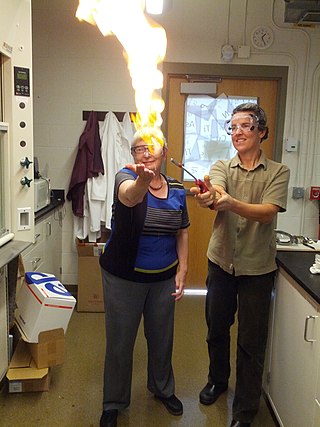
Alexandra Navrotsky is a physical chemist in the field of nanogeoscience. She is an elected member of the United States National Academy of Sciences (NAS) and the American Philosophical Society (APS). She was a board member of the Earth Sciences and Resources division of the NAS from 1995 until 2000. In 2005, she was awarded the Urey Medal, by the European Association of Geochemistry. In 2006, she was awarded the Harry H. Hess Medal, by the American Geophysical Union. She is currently the director of NEAT ORU, a primary program in nanogeoscience. She is distinguished professor at University of California, Davis.

Younan Xia is a Chinese-American chemist, materials scientist, and bioengineer. He is the Brock Family Chair and Georgia Research Alliance (GRA) Eminent Scholar in Nanomedicine in the Wallace H. Coulter Department of Biomedical Engineering, with joint appointments in the School of Chemistry & Biochemistry, the School of Chemical & Biomolecular Engineering, and Parker H. Petit Institute for Bioengineering & Bioscience at the Georgia Institute of Technology.
CatherineJ. Murphy is an American chemist and materials scientist, and is the Larry Faulkner Professor of Chemistry at the University of Illinois at Urbana-Champaign (UIUC). The first woman to serve as the head of the department of chemistry at UIUC, Murphy is known for her work on nanomaterials, specifically the seed-mediated synthesis of gold nanorods of controlled aspect ratio. She is a member of the American Association for the Advancement of Science, National Academy of Sciences, and the American Academy of Arts and Sciences in 2019.
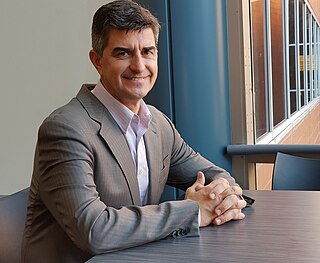
Yury Georgievich Gogotsi is a Ukrainian scientist in the field of material chemistry, professor at Drexel University, Philadelphia, United States since 2000 in the fields of Materials Science and Engineering and Nanotechnology. Distinguished University and Trustee Chair professor of materials science at Drexel University — director of the A.J. Drexel Nanotechnology Institute.
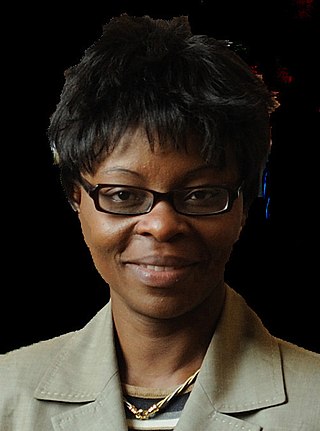
Omowunmi "Wunmi" A. Sadik is a Nigerian professor, chemist, and inventor working at New Jersey Institute of Technology. She has developed microelectrode biosensors for detection of drugs and explosives and is working on the development of technologies for recycling metal ions from waste, for use in environmental and industrial applications. In 2012, Sadik co-founded the non-profit Sustainable Nanotechnology Organization.
Anna Christina Balazs is an American materials scientist and engineer. She currently is Distinguished Professor at the University of Pittsburgh and holds the John A. Swanson Chair at the Swanson School of Engineering.
Charles Sherwood Fadley was an American physicist who was a professor at University of California, Davis and an elected Fellow of the American Physical Society, the American Association for the Advancement of Science, the American Vacuum Society and the Institute of Physics.

Nicole Grobert FRSC FYAE is a German-British materials chemist. She is a professor of nanomaterials at the Department of Materials at the University of Oxford, fellow of Corpus Christi College, Oxford, and a Royal Society industry fellow at Williams Advanced Engineering. Grobert is the chair of the European Commission's Group of Chief Scientific Advisors.

Sara E. Skrabalak is a James H. Rudy Professor at Indiana University. Skrabalak leads a research group in the department of chemistry which focuses on the development of new nanomaterials. She has an adjunct appointment in the department of intelligent systems engineering.
Susan M. Kauzlarich is an American chemist and is presently a distinguished professor of chemistry at the University of California, Davis. At UC Davis, Kauzlarich leads a research group focused on the synthesis and characterization of Zintl phases and nanoclusters with applications in the fields of thermoelectric materials, magnetic resonance imaging, energy storage, opto-electronics, and drug delivery. Kauzlarich has published over 250 peer-reviewed publications and has been awarded several patents. In 2009, Kauzlarich received the annual Presidential Award for Excellence in Science, Mathematics and Engineering Mentoring, which is administered by the National Science Foundation to acknowledge faculty members who raise the membership of minorities, women and disabled students in the science and engineering fields. In January 2022 she became Deputy Editor for the scientific journal, Science Advances. She gave the Edward Herbert Boomer Memorial Lecture of the University of Alberta in 2023.
Sandra J. Rosenthal is the Jack and Pamela Egan Professor of Chemistry, professor of physics and astronomy, pharmacology, chemical and biomolecular engineering, and materials science at Vanderbilt University. She is a joint faculty member at Oak Ridge National Laboratory in the Materials Science and Technology Division and the director of the Vanderbilt Institute of Nanoscale Science and Engineering.
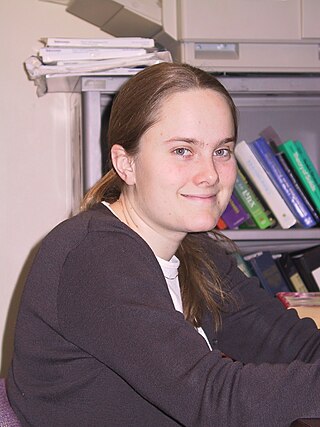
Michelle Povinelli is a Professor of Electrical Engineering and Physics and Astronomy at the University of Southern California (USC) and Fellow of the OSA and SPIE. Povinelli's research in nanophotonics focuses on the behavior of light inside complex materials.
Clare McCabe is an American chemical engineer who is Cornelius Vanderbilt Chair of Engineering and professor of engineering at Vanderbilt University. She was elected Fellow of the American Association for the Advancement of Science in 2019. Her research makes use of molecular modelling to understand the properties of biological systems, fluids and nanomaterials.

Prineha Narang is an American physicist and computational material scientist. She is a Professor of Physical Sciences and Howard Reiss Chair at the University of California, Los Angeles (UCLA). Narang currently serves as a U.S. Science Envoy approved by the Secretary of State to identify opportunities for science and technology cooperation. Before moving to UCLA, she was first an Environmental Fellow at Harvard University Center for the Environment and then an Assistant Professor in the John A. Paulson School of Engineering and Applied Sciences at Harvard University. Narang’s work has been recognized internationally by many awards and a variety of special designations, including the Mildred Dresselhaus Prize, the 2021 IUPAP Young Scientist Prize in Computational Physics, a Friedrich Wilhelm Bessel Research Award from the Alexander von Humboldt Foundation, and a Max Planck Sabbatical Award from the Max Planck Society. Narang also received a National Science Foundation CAREER Award in 2020, was named a Moore Inventor Fellow by the Gordon and Betty Moore Foundation for the development for a fundamentally new strategy for single molecule sensing and environmental toxin metrology using picoscale quantum sensors, CIFAR Azrieli Global Scholar by the Canadian Institute for Advanced Research, and a Top Innovator by MIT Tech Review. Narang was awarded a Guggenheim Fellowship in 2023.
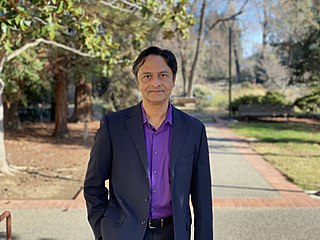
M. Saif Islam is a Bangladeshi-American engineering professor of Electrical and Computer Engineering at the University of California, Davis.
Bianxiao Cui is the current Job and Gertrud Tamaki Professor of Chemistry and a fellow of the Stanford Neuroscience Institute at Stanford University.
Xiuling Li is a distinguished electrical and computer engineering professor in the field of nanostructured semiconductor devices. She is currently the Temple Foundation Endowed Professorship No. 3 in Electrical and Computer Engineering and Fellow of the Dow Professor in Chemistry at the University of Texas at Austin. Previously, she was a Donald Biggar Willet Professor in Electrical and Computer Engineering and Interim Director of the Nick Holonyak Jr. Micro and Nanotechnology Laboratory at the University of Illinois at Urbana-Champaign.
Joan M. Redwing is an American materials scientist known for research on electronic and optoelectronic materials, including the processing of semiconductor thin films and nanomaterials by metalorganic chemical vapor deposition (MOCVD). Redwing is a distinguished professor of materials science and engineering and electrical engineering at Pennsylvania State University and director of the university's 2D Crystal Consortium research facility. She is a fellow of the American Association for the Advancement of Science, the American Physical Society, and the Materials Research Society.

Shelley Claridge is an American chemist who is an associate professor of chemistry at Purdue University. Her research considers the design of nanostructured materials and better understanding their physical and chemical properties. She was awarded a Schmidt Science Polymaths Award in 2022 and the American Chemical Society Women Chemists Committee Rising Star Award in 2023.









